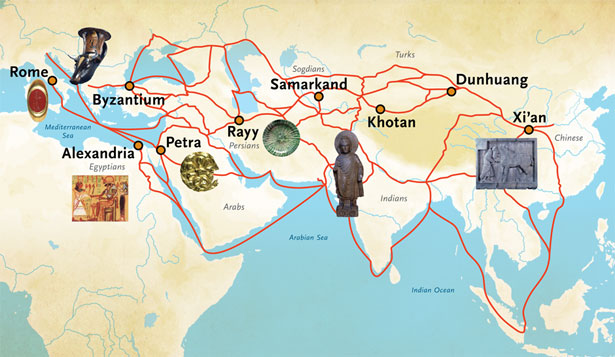Exhibit - The Silk Road
What was the Silk Road?
The Silk Road was a vast system of trade routes that connected China with the West.

At least 2,000 years ago, enterprising merchants began traveling through Asia to trade their wares and to obtain exotic materials, most notably silk. The famous Silk Road was a set of trade routes that connected China, India, Central Asia, the Middle East, and parts of Africa and Europe. The Silk Road spanned over 4,000 miles and allowed for the exchange of goods, ideas, technology, and religions between East and West. Silk Road travelers moved by foot and camel caravan through the harsh terrain of Eastern Central Asia.
The path for anyone traveling along the Silk Road was through the Tarim Basin, in which the arid Taklamakan (tah-kluh-mah-KAHN) Desert is located. The many cultures passing through this region influenced the people living there, bringing new commodities, beliefs, and technologies to their way of life.
Trade moved in both directions along the Silk Road, with domesticated sheep, wheat, and bronze coming from the West, and paper, silk, iron, and steel among the commodities that came from the East. |















